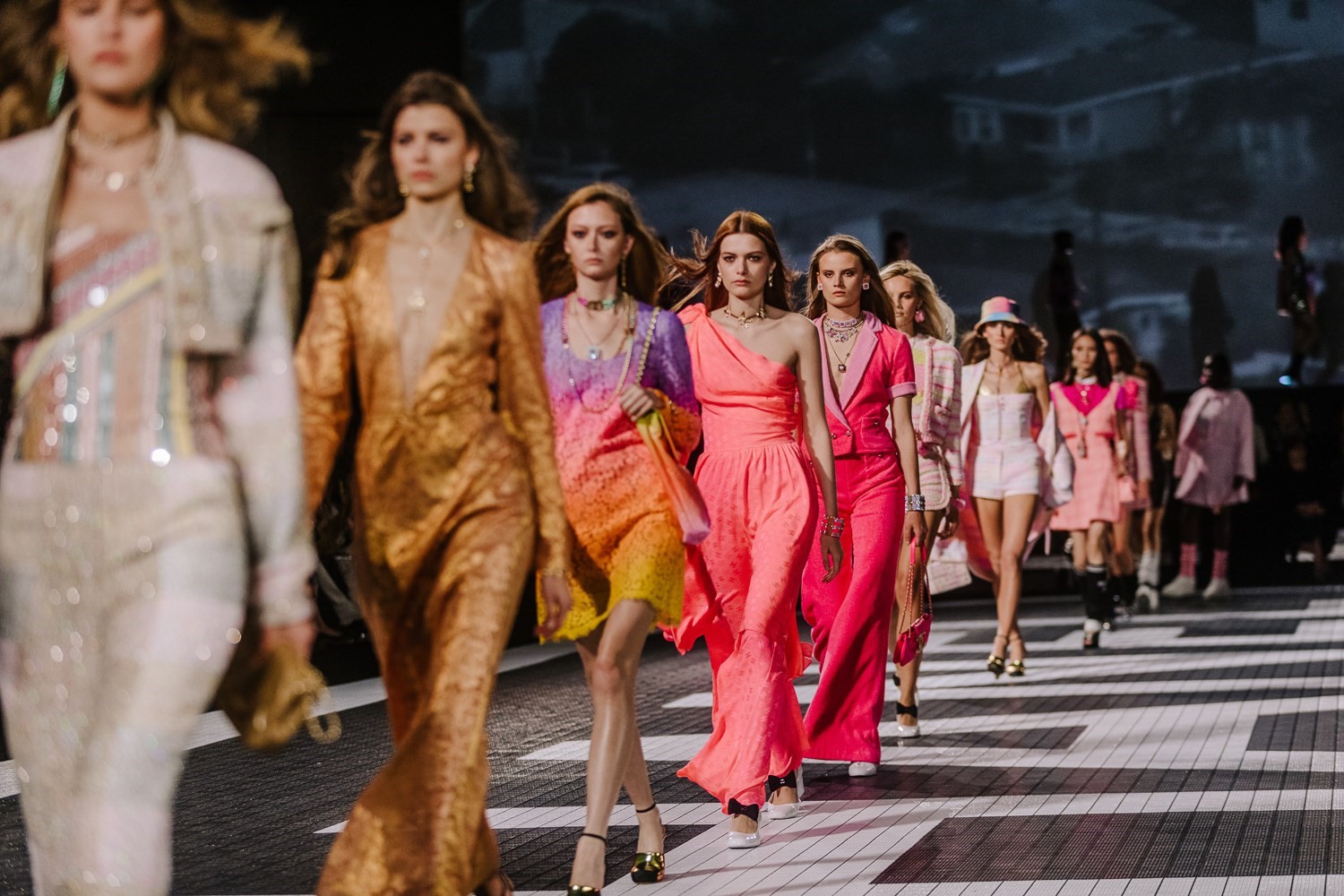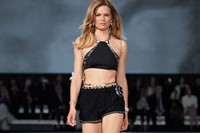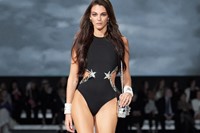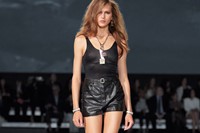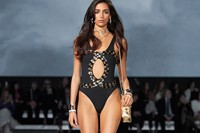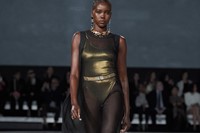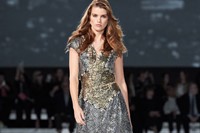The house of Chanel’s links to Los Angeles – more specifically, to Hollywood, where it just showed its 2024 Cruise collection – are long-lasting. In March 1931, Gabrielle Chanel made her first trip there, at the specific request of Samuel Goldwyn, then head of United Artists (despite his name, he was interestingly never connected with management, ownership or production Metro-Goldwyn-Mayer, the name acquired through a merger in the 1920s. You learn all sorts on Wikipedia). Chanel gave her first ever stateside interviews after docking in New York, before heading out west, with the intention of designing wardrobes both on-screen and off for the studio’s leading ladies, Ina Claire and Gloria Swanson amongst them. Goldwyn’s aim in hiring Chanel was, to quote the New York Times, “Providing those pictures with an authority and distinction in fashion and style that the screen has never laid claim to before.” Chanel’s fee was a million dollars, equivalent to around $16m today.
It was a relatively brief experiment, for reasons that, in retrospect, are maybe obvious. Chanel’s style, stripped-back and pared down, had “put the apache’s sweater into the Ritz, utilised the ditch-digger’s scarf, made chic the white collars and cuffs of the waitress,” to quote Janet Flanner’s New Yorker profile, published the same month as Chanel’s jaunt to La La Land. Hollywood, by contrast – and especially in the throes of the Depression of the 1930s – was all about glamour, a word first popularised by its stars, where waitresses were goddesses. In short, the diametric opposite of Chanel’s vision of modern femininity. Costumes for those pictures required exaggeration and extremity, a bit of fantasy to erase the grinding mundanity and hardship of life. Chanel was, in short, too real for Hollywood. She only designed for three pictures at United, neither side of the deal ultimately suited to one another – although stars like Marlene Dietrich continued to wear her clothes in their private lives, of course. And, given Goldwyn’s stated aim, it's interesting to note that by the middle of the decade it was Hollywood that was calling the stylistic shots – MGM’s costume head Gilbert Adrian was arguably the most powerful man in fashion, his designs first dressing Greta Garbo and causing a millinery craze that dislodged the all-encompassing cloche of the 1920s, then popularising the wide-shouldered silhouette now emblematic of the decade far more than the much-credited influence of Chanel’s arch-nemesis, Elsa Schiaparelli.
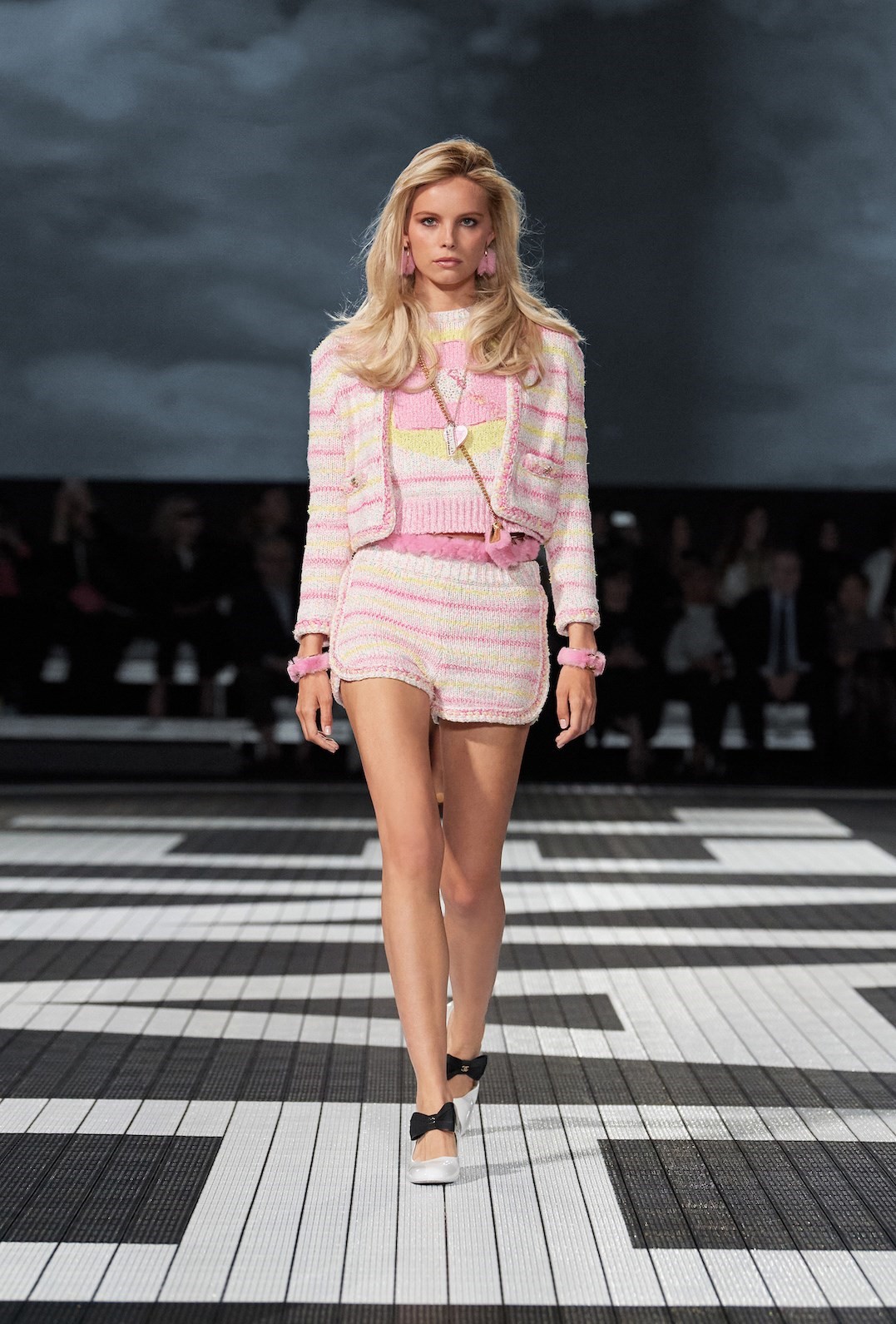
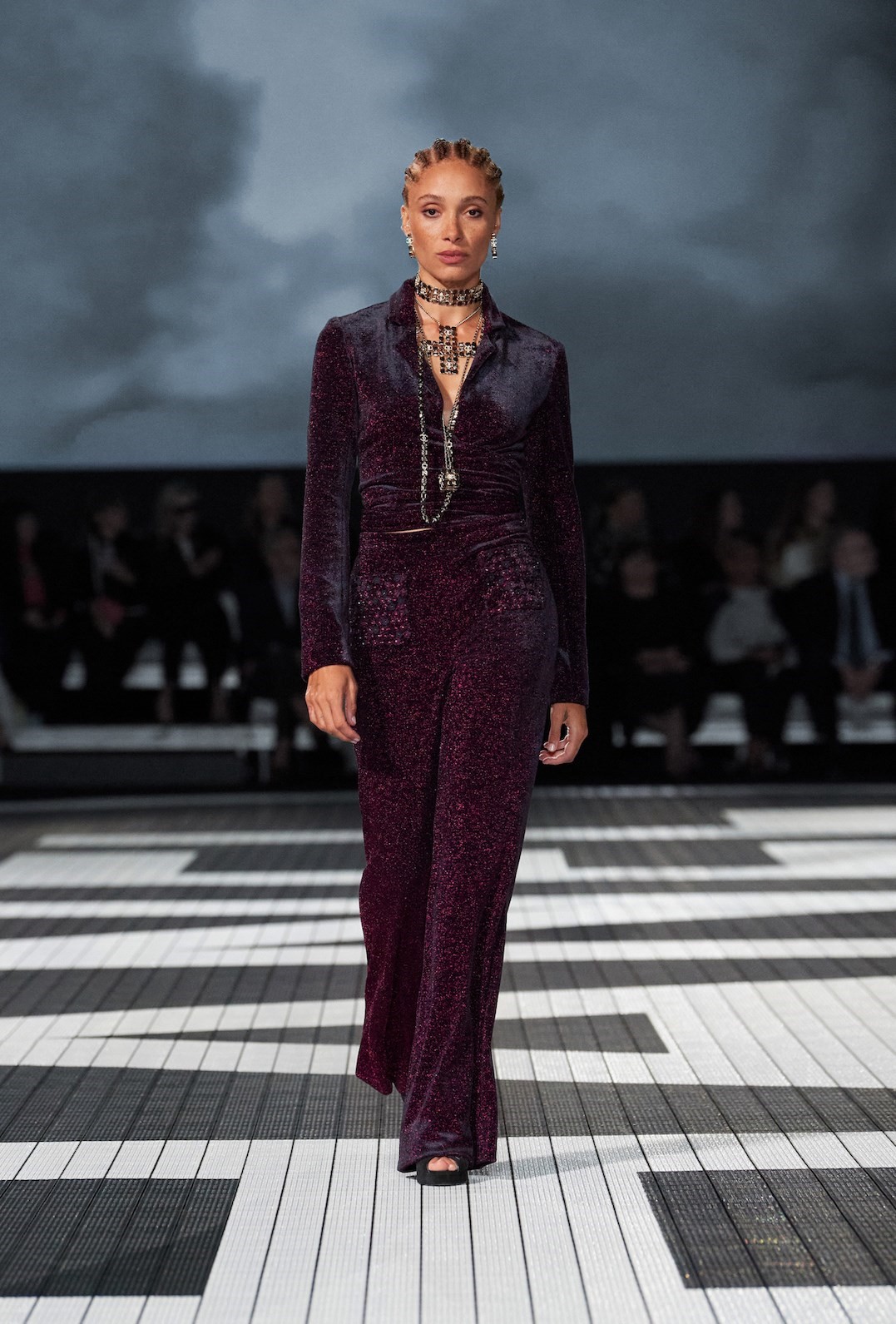
But Chanel’s aim in the collaboration – early use of that phrase – was more interesting. It was, it seems, to use Hollywood as a tool to bring her aesthetic to a wider audience. She harnessed the power of cinema and celebrity – incidentally, the first fashion house to ever do so – to project her style around the world. It’s canny and modern – in fact, it would take most other fashion houses a good 60 years to catch on to what Chanel realised in cinema’s infancy. And Chanel still does it better than most – the celebrity roster at their show was high (Marion Cotillard, Margot Robbie and Kristen Stewart were all present and correct), as you might imagine given they’d headed to their natural habitat. That is, not only Los Angeles but the Paramount Studio lot, the only working film studio left in the heart of Hollywood, where there’s a literal film set at every turn.
But this was no costume party. Virginie Viard’s offering was much broader, but it did boil down to a pragmatism that puts her directly in sync with Gabrielle Chanel a century or so ago. Coco never did leg-warmers, nor shorts, but her filching of jersey from men’s underwear was perhaps the first example of sportswear infiltrating high fashion, which ultimately proved the leitmotif of twentieth-century style. Sports was Viard’s kick here, borrowing from skaters and surfers, down even to aerobics gear. It was a comment on the general athletic-isation of aesthetics, meaning that even an evening-gown is now expected to be as easy to wear as a T-shirt. There were a few of those – and a couple of vest-tops worn with long, embroidered evening skirts. Those felt embedded in an American sportswear tradition – of Claire McCardell in the 1940s, maybe, or Isaac Mizrahi’s T-shirts and ball-skirts from the 1990s. But, of course, when it comes to easy fashion, all roads lead back to Coco. We could go on about Chanel’s place in the American vernacular – after her 1954 comeback, the Chanel suit was seized upon initially by America rather than France, and subsequently worn by very American woman of note from Jacqueline Kennedy to Marge Simpson. But, actually, it was in shorter supply here – the mood closer to the street of now than a hazy nostalgia for Chanel’s greatest hits. Case in point: while Chanel herself never raised skirts above the knee, here legginess was key, clothes cut-away to free the body as well as celebrate it, a collection embedded in a body-consciousness that seems fundamentally of the now and quintessentially Californian. And yet, also, inherently Chanel.
